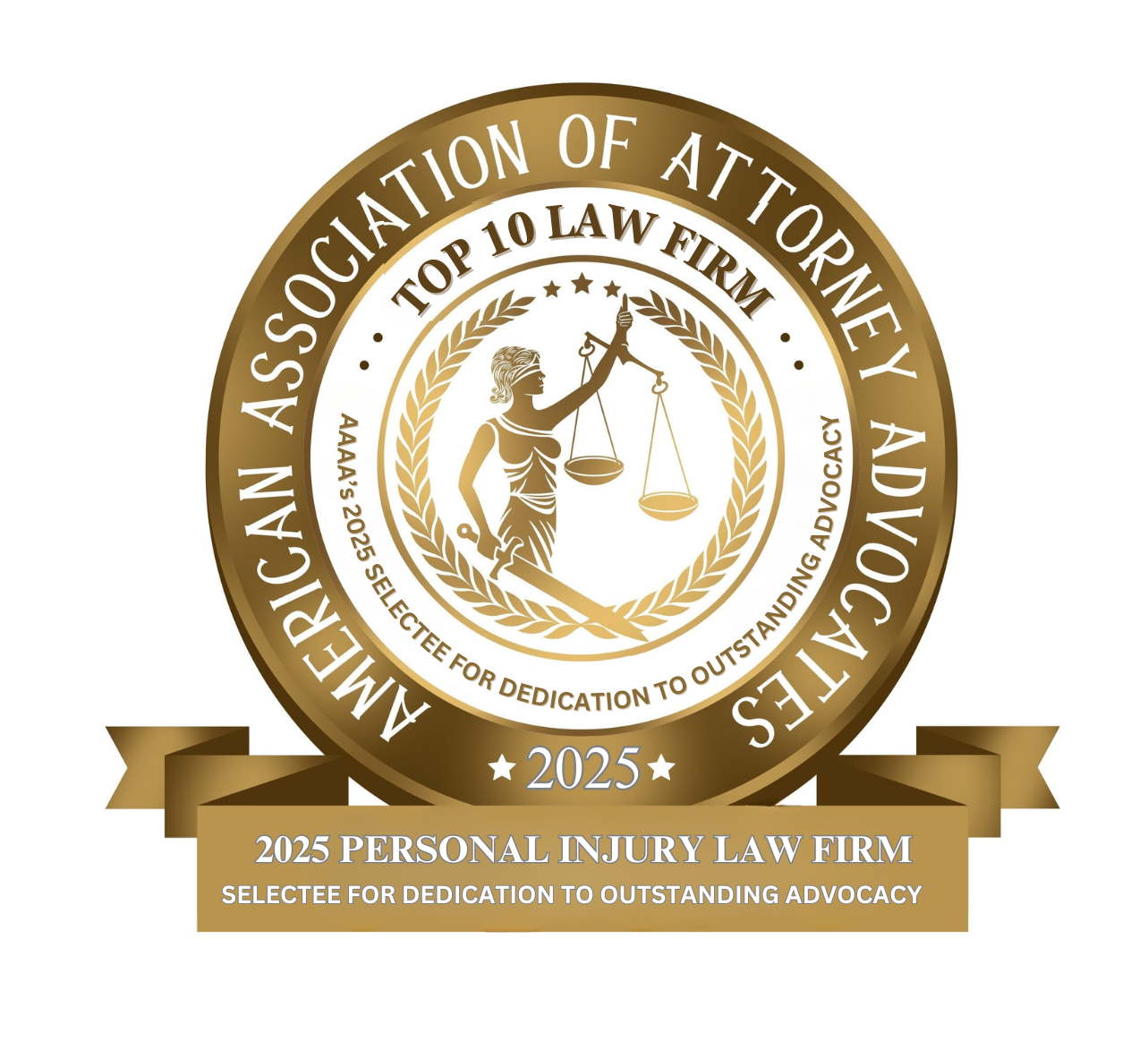- Free Consultation: (630) 527-4177 Tap Here to Call Us
What’s the Difference Between a Sprain and a Strain?

When someone is injured in a car crash, slip and fall, workplace incident, or other personal injury event, it is very common for medical records to mention a “sprain” or a “strain.” Although many people use these terms interchangeably, medically and legally, they are two very different injuries. Each involves different tissues, different mechanisms of injury, and different treatment plans. In the context of a personal injury claim, properly identifying whether someone suffered a sprain or a strain can influence everything from the insurance company’s evaluation to the amount of compensation an injured person may be entitled to receive.
This blog explains the key differences between sprains and strains, why the distinction matters in a personal injury case, and what victims should know about documenting these injuries.
“In personal injury cases, even so-called ‘soft-tissue injuries’ like sprains and strains can change a person’s life. Persistent pain, weakness, and long recovery periods are real challenges. At John J. Malm & Associates, we make sure every aspect of the injury is documented and every dollar of compensation is fought for.” — John J. Malm, Naperville injury attorney
Sprain vs. Strain: The Medical Definitions
Although the words sound similar, these injuries affect different structures of the body:
- Sprain: A sprain is an injury to a ligament, the tough bands of tissue that connect bones to one another and stabilize joints. Sprains occur when ligaments are stretched or torn due to sudden twisting forces. Common locations include the ankle, knee, and wrist. According to Yale Medicine, sprains often involve partial tearing that produces swelling, bruising, and instability.
- Strain: A strain is an injury to a muscle or tendon, the tissue that connects muscle to bone. Strains occur when a muscle or tendon is overstretched or forcibly contracted, leading to tears of varying severity. They often happen in the back, neck, or hamstrings. Mayo Clinic identifies strains as common soft-tissue injuries, frequently caused by overuse or a sudden load.
Understanding whether a ligament or a muscle/tendon is damaged is essential because the anatomy, healing timeline, and potential for long-term disability differ significantly.
Why the Difference Matters in Personal Injury Cases
Sprains and strains may both fall under the umbrella of “soft-tissue injuries,” but the legal implications can differ:
- Ligament injuries (sprains) may involve instability that affects walking, lifting, or daily activities.
- Muscle and tendon injuries (strains) may produce lasting pain, weakness, or limitations in range of motion.
Insurance companies often try to minimize soft-tissue injuries; therefore, clearly documenting the specific injury, sprain vs. strain, is critical in demonstrating seriousness, treatment needs, and long-term impact.
How Sprains and Strains Happen in Accidents
Different accidents create different forces, and those forces affect various tissues:
Sprains often result from:
- Twisting or rolling the ankle during a fall
- Sudden impact to the knee (common in motor vehicle collisions)
- Bracing for impact by extending the hands, causing a wrist sprain
Strains often result from:
- Whiplash-type forces in car crashes, overstretching neck muscles
- Lifting heavy objects incorrectly, causing low-back muscle strain
- Sudden acceleration or deceleration that forces a muscle to contract violently
In many personal injury cases, victims suffer both types of injuries simultaneously. For example, whiplash (a cervical strain) combined with a torn ligament in the wrist after bracing during a collision.
Severity Levels: Grades of Sprains and Strains
Medical professionals classify sprains and strains into three grades based on severity:
- Grade I (Mild): Minor stretching of fibers; mild pain; recovery in days to weeks.
- Grade II (Moderate): Partial tear of the ligament or muscle/tendon; swelling, weakness, or instability; recovery in weeks to months.
- Grade III (Severe): Full tear or rupture. Often requires surgery; recovery in months or longer. BMJ Best Practice notes that Grade III injuries often lead to prolonged disability and more intensive rehabilitation.
The severity level directly affects medical costs, lost work time, and the overall value of a personal injury claim.
How Doctors Distinguish Sprains and Strains
Accurate diagnosis is crucial, both for proper treatment and for legal documentation.
Common diagnostic tools include:
- Physical exam: Evaluates swelling, warmth, tenderness, stability, and range of motion.
- X-rays: Used primarily to rule out fractures.
- MRI: Highly effective at identifying ligament tears and deep muscle/tendon injuries.
- Ultrasound: Useful for detecting tendon and some ligament injuries; studies show high diagnostic accuracy for certain ligaments, such as those in the ankle.
Medical imaging is particularly important in legal claims because it provides objective evidence that insurance companies cannot easily dispute.
Treatment and Recovery
While conservative care is often effective, sprains and strains have different recovery paths:

Typical treatments include:
- Protection, Rest, Ice, Compression, Elevation (RICE/POLICE protocols)
- NSAIDs or pain relievers
- Physical therapy and rehabilitative exercises
- Bracing or immobilization (more common with sprains involving joint instability)
- Surgery for complete tears, especially in Grade III injuries
The National Center for Biotechnology Information notes that treatment costs for soft-tissue injuries can vary widely, and rehabilitation plays a major role in long-term outcomes.
Statistics on the Prevalence of Sprains and Strains
Soft-tissue injuries like sprains and strains are among the most common injuries treated in hospitals, workplaces, and personal injury settings.
- Emergency Departments: The CDC reports tens of millions of injury-related emergency visits each year, with musculoskeletal injuries, particularly sprains and strains, making up a significant share.
- Workplace Injuries: According to the Bureau of Labor Statistics (BLS), private employers reported 2.6 million nonfatal workplace injuries and illnesses in 2023, and sprains and strains remain one of the leading causes of injuries resulting in days away from work. These injuries frequently result from overexertion, slips and falls, and sudden bodily reactions.
These numbers help establish the broader context for the seriousness and frequency of these injuries, which is valuable in demonstrating the legitimacy of a personal injury claim.
How Sprains and Strains Impact the Value of a Personal Injury Case
Insurance companies often label sprains and strains as “minor,” even when medical evidence shows prolonged pain or disability. In reality, these injuries can significantly affect a victim’s life.
Key factors affecting case value include:
- Extent of medical treatment (PT, imaging, injections, surgery)
- Length of recovery
- Whether the injury affected work ability
- Ongoing pain or instability
- Permanent functional limitations
- Impact on daily living activities
For example, a torn ankle ligament requiring surgery followed by six months of therapy will result in higher damages than a minor back strain treated with rest.
What Evidence to Gather If You Suffer a Sprain or Strain in a Personal Injury Case
For the strongest possible personal injury claim, injured victims should gather:
- Medical records from initial and follow-up visits
- Imaging results (MRI, X-ray, ultrasound)
- Physical therapy notes
- Photographs of swelling, bruising, or the accident scene
- Witness statements
- Pay stubs or employer letters showing lost wages
This documentation helps establish the severity of the injury and its impact on daily life.
Frequently Asked Questions about Sprains and Strains in Personal Injury Accidents
Q: Can I file a personal injury claim for a sprain or strain even if I didn’t break a bone?
A: Yes. Soft-tissue injuries can still cause significant pain, disability, and medical expenses. They are legally recognized injuries that support compensation claims.
Q: How soon should I see a doctor after an accident?
A: Immediately. Early diagnosis helps rule out serious complications, provides documentation for your case, and ensures proper treatment.
Q: What if the insurance adjuster says it’s “just a soft-tissue injury”?
A: Do not accept this without legal advice. Many soft-tissue injuries result in long-term pain or require prolonged therapy. Proper medical documentation can rebut an insurer’s attempt to undervalue the claim.
Q: Can sprains or strains become chronic conditions?
A: Yes. Untreated ligament injuries can cause joint instability, and untreated strains can lead to chronic muscle weakness or recurring pain.
Contact the Trusted Illinois Personal Injury Attorneys at John J. Malm & Associates
Sprains and strains may sound like minor injuries, but for many accident victims, they are anything but minor. They can lead to months of pain, weeks of lost income, costly rehabilitation, and lingering functional limitations. Understanding the difference between a sprain and a strain and documenting the injury properly is essential to protecting your health and your legal rights after an accident
If you or a loved one suffered a sprain or strain in an accident caused by someone else’s negligence, don’t let an insurance company minimize your injury. At John J. Malm & Associates, our experienced Illinois personal injury team is here to guide you, protect your rights, and fight for the compensation you deserve. Contact our firm today for a free consultation. We will review your case, explain your options, and help you take the next steps toward recovery and justice.















